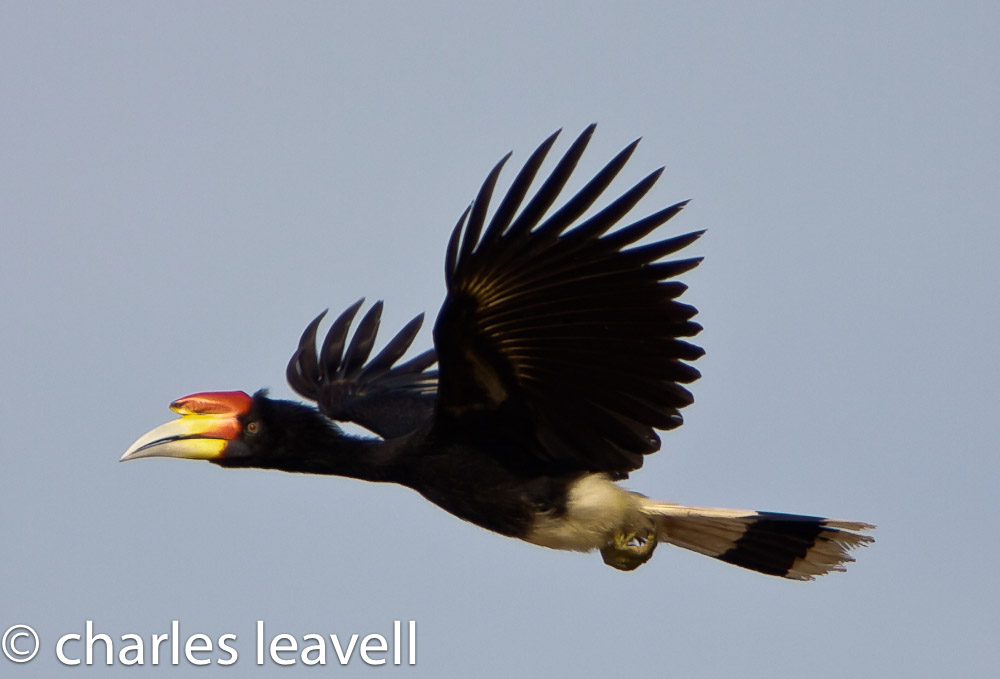

In a survey from southern Thailand published in 2011 it was found that of food per weight brought to the nest, 72% was figs, 24% other fruits and 4% animal prey, with 63 g/obs.hr delivered to nests. Prey includes invertebrate animals as well as lizards, rodents, tree frogs and bird eggs. Also takes animal food on an opportunistic basis, often below the canopy, and especially during the breeding season to feed protein to the young. In a tropical rainforest of southern Thailand, among non-fig fruit Polyalthia sp (Annonaceae), Aglaia spectabilis (Meliaceae) and Oncosperma horridum (Arecaceae) are dominant. Feeds mainly on fruits, especially many figs, but also lipid-rich capsules and drupes. From sea level and coastal swamp forest into lower montane forest, recorded to 1,400 m elevation. Habits: Found in extensive tracks of primary Sundaic rainforest extends into mature secondary forest, and occasionally seen flying over disturbed areas or plantations to and from feeding grounds. Wings give out a loud whooshing sound in flight. The male’s call near the nest is a regular deep ho-ok note, answered by the female’s similar, slightly higher and softer note. Voice: The call in flight is a characteristic penetrating disyllabic ger-ronk that can be heard over several km, often as a duet. Black hornbill (Anthracoceros malayanus): This. Borneo subspecies is generally smaller with shorter, broader casque sharply upturned and curled at tip Javan subspecies has broader black tail band and forward-pointing straight casque, but with some individual variation. Rhinoceros hornbill (Buceros rhinoceros): This large, mostly black bird is. Female is smaller with a smaller casque, without black line on it white eyes and red orbital skin. Male has large ivory-white bill with some bright orange at the base of upper mandible and yellow colouring from preen oil extended to about one third of the bill the casque is the typical ‘horn” bill, with prominent reddish orange horn-like shape and black thick line along the rear edge, but thinner along both sides and curved to front. Very large hornbill with black plumage except for white thighs and vent tail white with broad black band. silvestris in Java.ĭistribution: Sunda subregion south Thailand, Peninsular Malaysia, Borneo, including Brunei and western Indonesia locally extinct in Singapore.ĭescription: 99-125 cm.
RHINOCEROS HORNBILL SOUND SKIN
Sexes are similar, except that females have an entirely yellow casque, a pale iris, and bare pink skin around the eye. Black face, wings, and breast contrast with white neck, belly, and tail. rhinoceros occurs in south Thailand, Peninsular Malaysia and Sumatra B. A huge, distinctive hornbill with a large yellow bill and casque. Red List Status: VU – Vulnerable, criteria A3cd+4cd (IUCN 2018)Ĭurrently three subspecies are recognised: B.


 0 kommentar(er)
0 kommentar(er)
